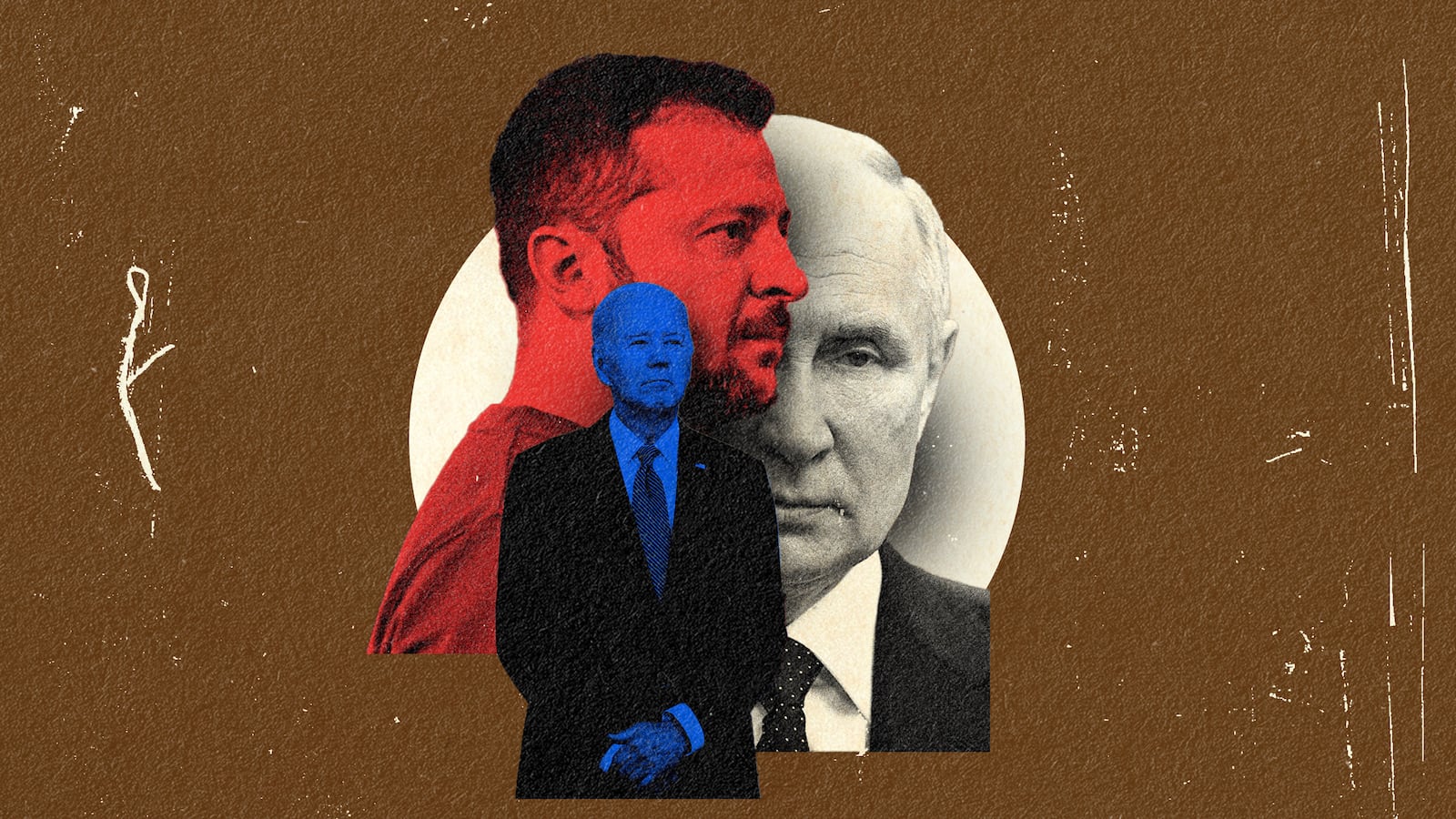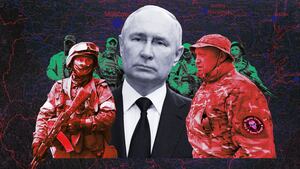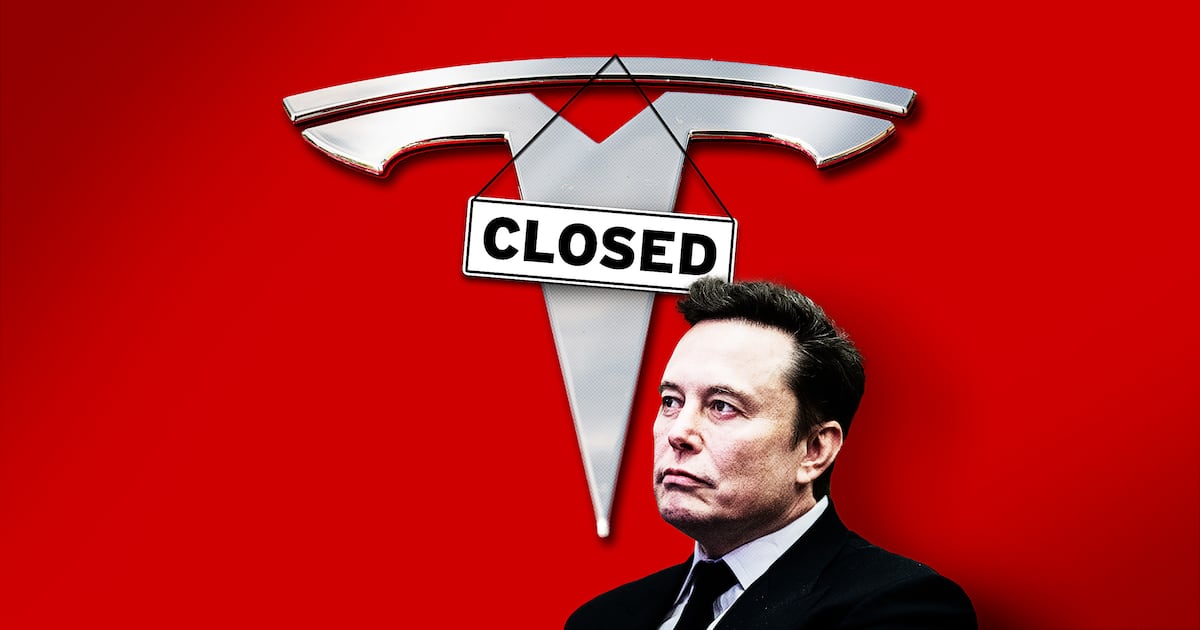Like a storm that blew across the Russian steppes, Yevgeny Prigozhin’s abortive march on Moscow has stirred up countless vortices of rumor. Days later, the consequences for those behind the insurrection—from Prigozhin to potential allies he may have had in the Russian military—are unclear.
Much of Wednesday, for example, was spent trying to determine the fate of General Sergei Surovikin, a military leader who allegedly had advance knowledge of Prigozhin’s assault and may have helped plan it.
The stories about Surovikin, however, may also have been a sign of a new set of consequences from the unrest: initiatives by Western and Ukrainian intelligence services to exploit the aftermath of the mutiny, and to further weaken Putin and Russia’s military by fueling doubt about them.
Leaks about Surovikin preceded the rumors he had been arrested, and many feel the tips about him may well have come from the U.S. intelligence community.
Such leaks—or other efforts to stir more confusion and division in Russia—are just some of the ways that Ukraine and its allies can take advantage of a series of events that have left only one thing clear: Vladimir Putin is weaker today than he was a week ago.
During the uncertainty of last weekend’s events, it was asserted that Washington had chosen a cautious path to avoid giving Putin the opportunity to assert the West had any role in the unrest. But, in the days since, many have called for steps to seize the opportunity created by Russia’s near-civil war. This includes calls for the U.S. and allies to step up even more aggressively with military aid to Ukraine so it can better attack the depleted and confused Russian forces within their borders.

Fighters of Wagner private mercenary group, including Roman Yamalutdinov (L), pull out of the headquarters of the Southern Military District to return to base, in the city of Rostov-on-Don, Russia, June 24, 2023.
ReutersThough other voices have reiterated concerns about provoking Putin, watching the Russian leader seek to end the Wagner assault via negotiation has sent a clear message that he is not playing from a position of strength—and he is far from the implacable foe setting the terms of the battle in Ukraine that many had assumed he was.
The story of the war in Ukraine since the full-scale invasion by Russia in February 2022 has been one of red lines (that cautious Westerners assumed existed) being repeatedly crossed—without retribution of any sort from Moscow.
There was initially a debate about whether too much Western support for Ukraine would trigger Putin’s wrath. Then came the debate about providing precision weapons. Then came the debate about tanks. Then came the debate about longer-range missile systems. Then came the debate about aircraft.
Throughout, there were concerns that active assistance provided to Ukraine from Western intelligence services might also incite Putin to respond against NATO, or that he might use tactical nuclear weapons. Without ignoring the seriousness of such concerns, we are now at a point when it is clear that just as the Russian military was not the unstoppable force it was thought to be, Putin’s red lines have for the most part been illusory.
With Russia’s military position in Ukraine weakened by the loss of Wagner’s troops there, with the insurrection serving as a blow to Russian morale, and with potential changes atop the Russian command structure (like the rumored arrest of Surovikin), Russia seems more vulnerable than before. And it's happening at precisely the moment Ukraine is about to put its foot on the gas with its counteroffensive (that has been making steady, modest progress in its first exploratory phases). Furthermore, a new Reuters/Ipsos poll makes it clear that support for Ukraine in the U.S. has not wavered and remains strong.
In other words, the moment, recent history, and good common strategic sense all suggest that now is the time to provide as much additional support to Ukraine as the West can muster… because it is likely to be used to the greatest effect and because we have seen that when Putin faces a risk that he feels threatens his hold on power, he is open to negotiating.
Many thought he was immune to pressure that losses in Ukraine might cause. But that is clearly not the case.

Ukraine's President Volodymyr Zelensky listens a report of Commander of the Ground Forces colonel general Oleksandr Syrskyi at a position near the front line in the Donetsk region of Ukraine June 26, 2023.
Ukrainian Presidential Press Service/Handout via ReutersThe Prigozhin mutiny was a result of tensions within Russia’s military establishment that, itself, is a direct result of the bad performance in Ukraine.
Prigozhin made a high-profile public challenge to the Kremlin’s rationale for going into the war… and the comparatively neutral response to his gambit from both military and Russian political leaders spoke volumes about the concerns that must exist within those groups.
Compounding all that with several months of substantial setbacks on the battlefield, Ukraine’s offensive potentially has the power to change the debate even further—and perhaps push Russia closer to a settlement.
Further, Russia’s allies are shifting nervously in their seats, wondering about whether they have bet on a fading comrade in the Kremlin. Nothing illustrates this better than the relative silence from many of them in the wake of Prigozhin’s move. Even China—which made some statements of support after the uprising faltered—also tellingly made a public statement suggesting that it thought Ukraine’s pre-invasion borders should be honored.
This suggests that—in addition to intelligence initiatives which will continue to fan the flames of division in Russia, and military support to help seize the moment on the battlefield in Ukraine—the U.S. and the West ought to be engaged in a quiet, but serious diplomatic push to reach out to those that previously bet on Russia.
Fortunately, it appears that the U.S. and our allies are, for the most part, attuned to the opportunities associated with this moment. And although they have smartly displayed caution in their immediate reactions to the Wagner uprising, through the actions of the intelligence community and statements like those of Secretary of State Antony Blinken—who cited the rebellion as a sign of cracks in Putin’s leadership—it is clear they are shifting their stance to take advantage of the opportunities that may be signaled by the recent chaos in Russia.
The arguments to provide additional aid faster to Ukraine make sense in the new context, and need to be seriously considered by U.S. and Western leaders.









